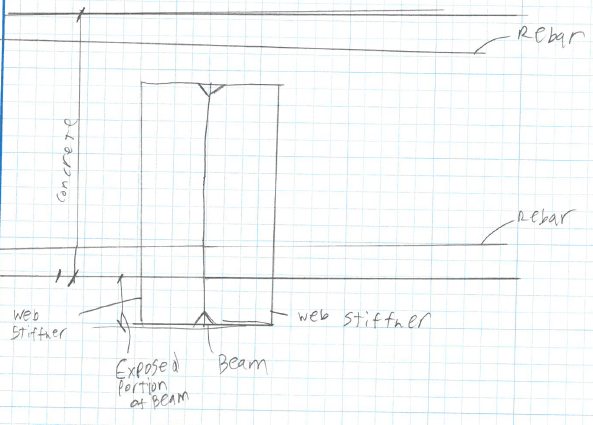Hi All,
The situation I am working with is looking at a partially encased steel beam in concrete. The beams have web stiffeners at points where connections are being made for the large loads that are applied, and are periodically placed along the beam length. There is rebar running through the beams as well with a portion of the steel beam exposed. There are no Headed studs used in the current design, ( I am newer to the company and am tasked with looking at r&d in these beams.)
The main question I am battling in my head here is if this beam set up constitutes a composite beam action or not? I am familiar with typical composite floor design, but this situation is a bit more then I have been exposed to before. Just looking for thoughts and if there is something I am missing when looking through the codes that would point to something.
The situation I am working with is looking at a partially encased steel beam in concrete. The beams have web stiffeners at points where connections are being made for the large loads that are applied, and are periodically placed along the beam length. There is rebar running through the beams as well with a portion of the steel beam exposed. There are no Headed studs used in the current design, ( I am newer to the company and am tasked with looking at r&d in these beams.)
The main question I am battling in my head here is if this beam set up constitutes a composite beam action or not? I am familiar with typical composite floor design, but this situation is a bit more then I have been exposed to before. Just looking for thoughts and if there is something I am missing when looking through the codes that would point to something.

